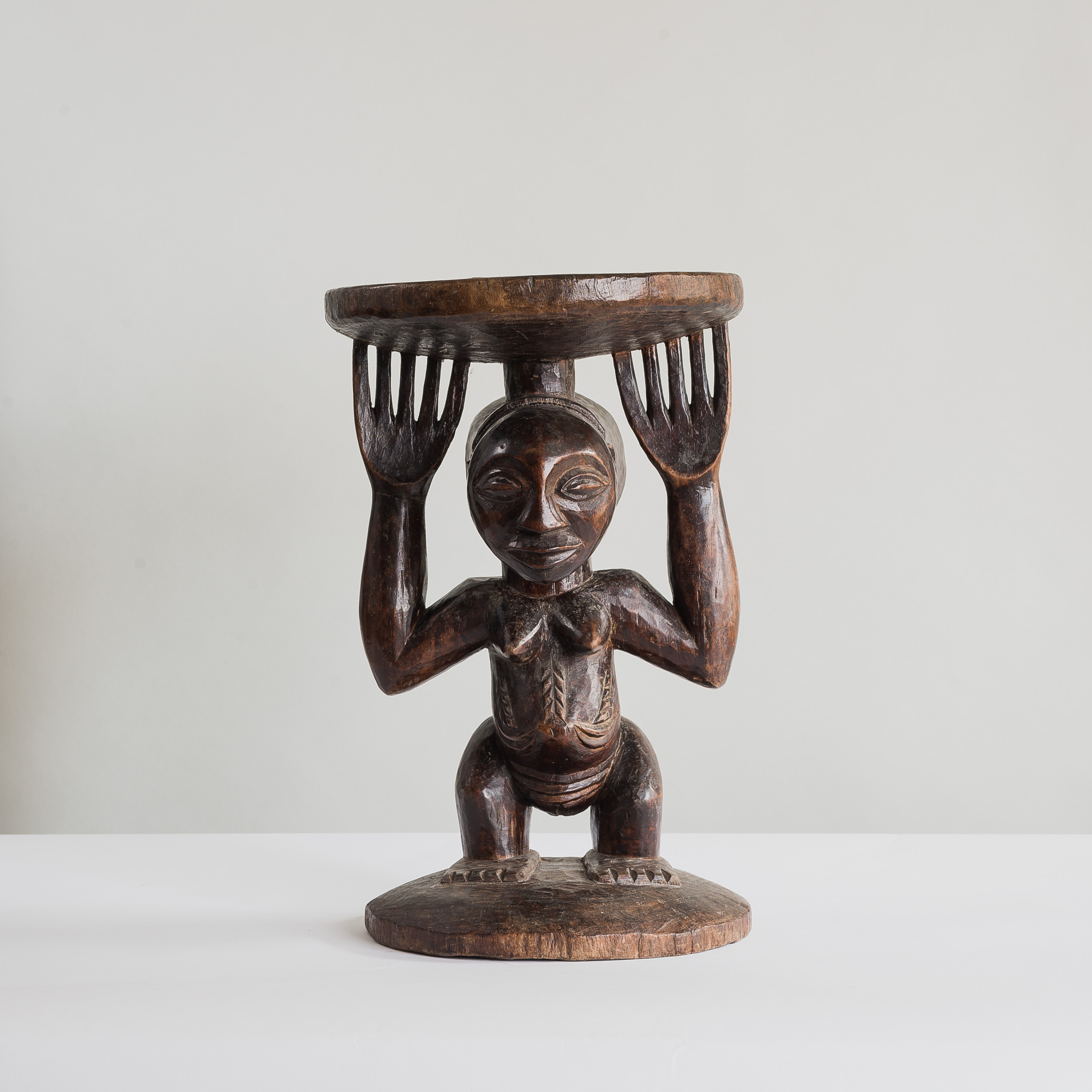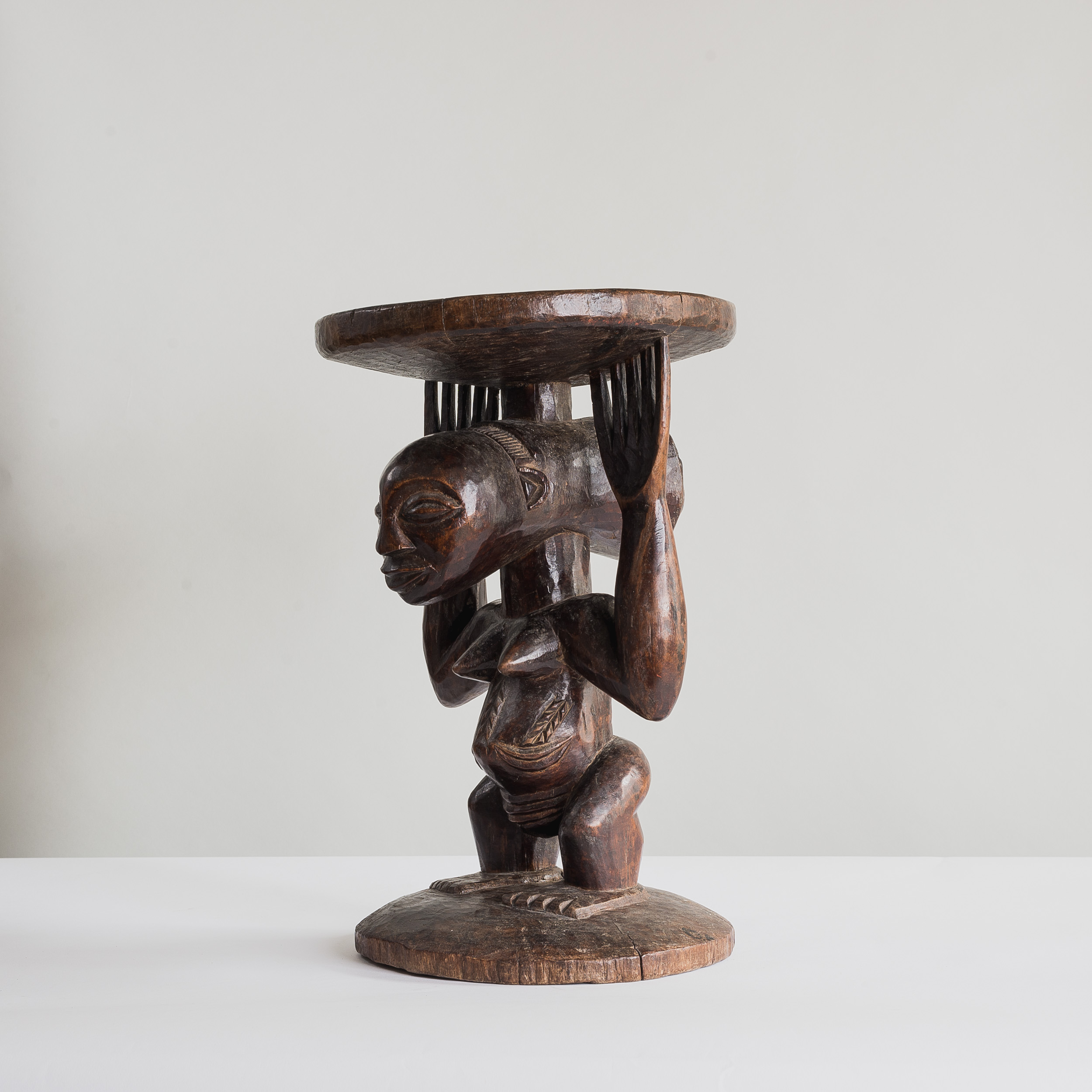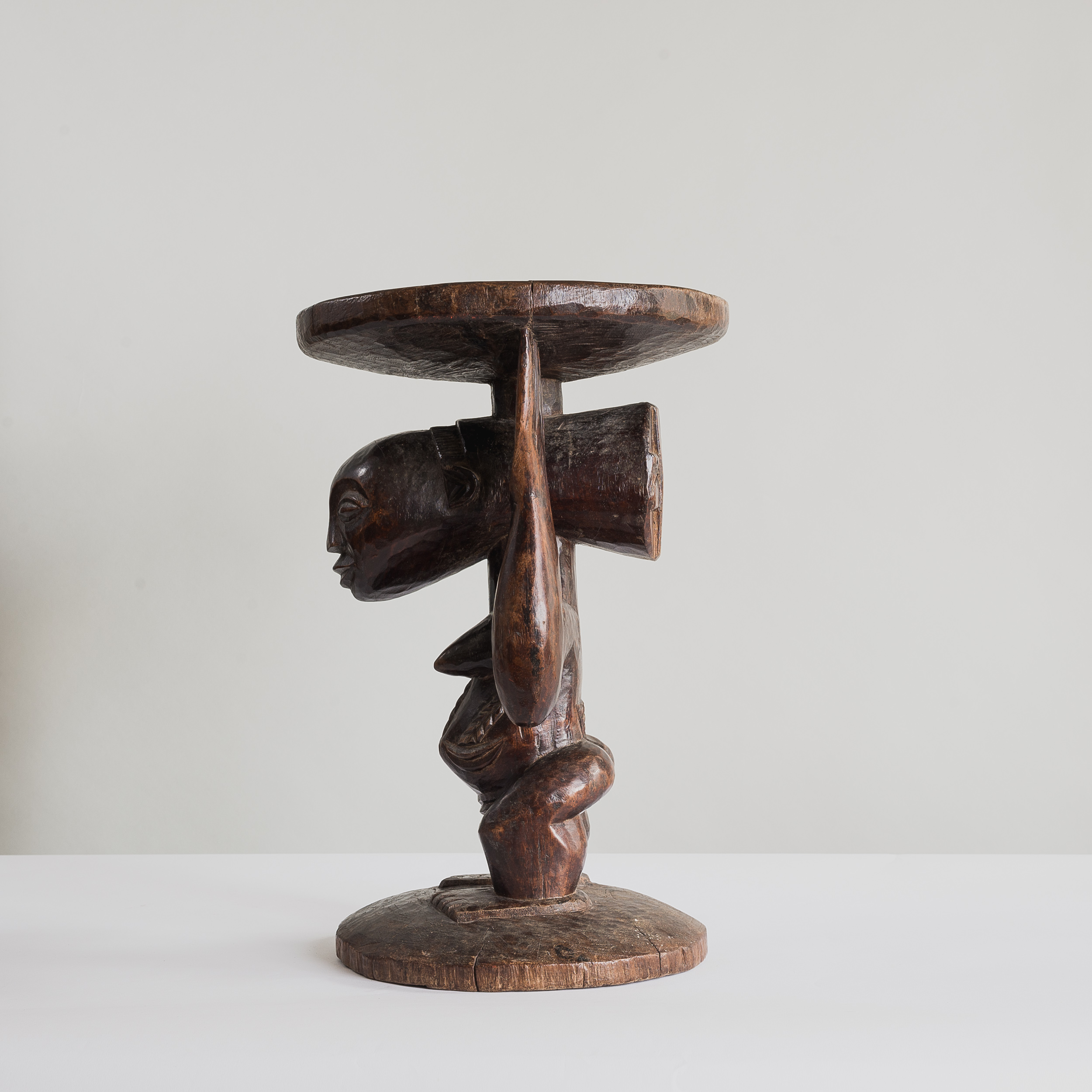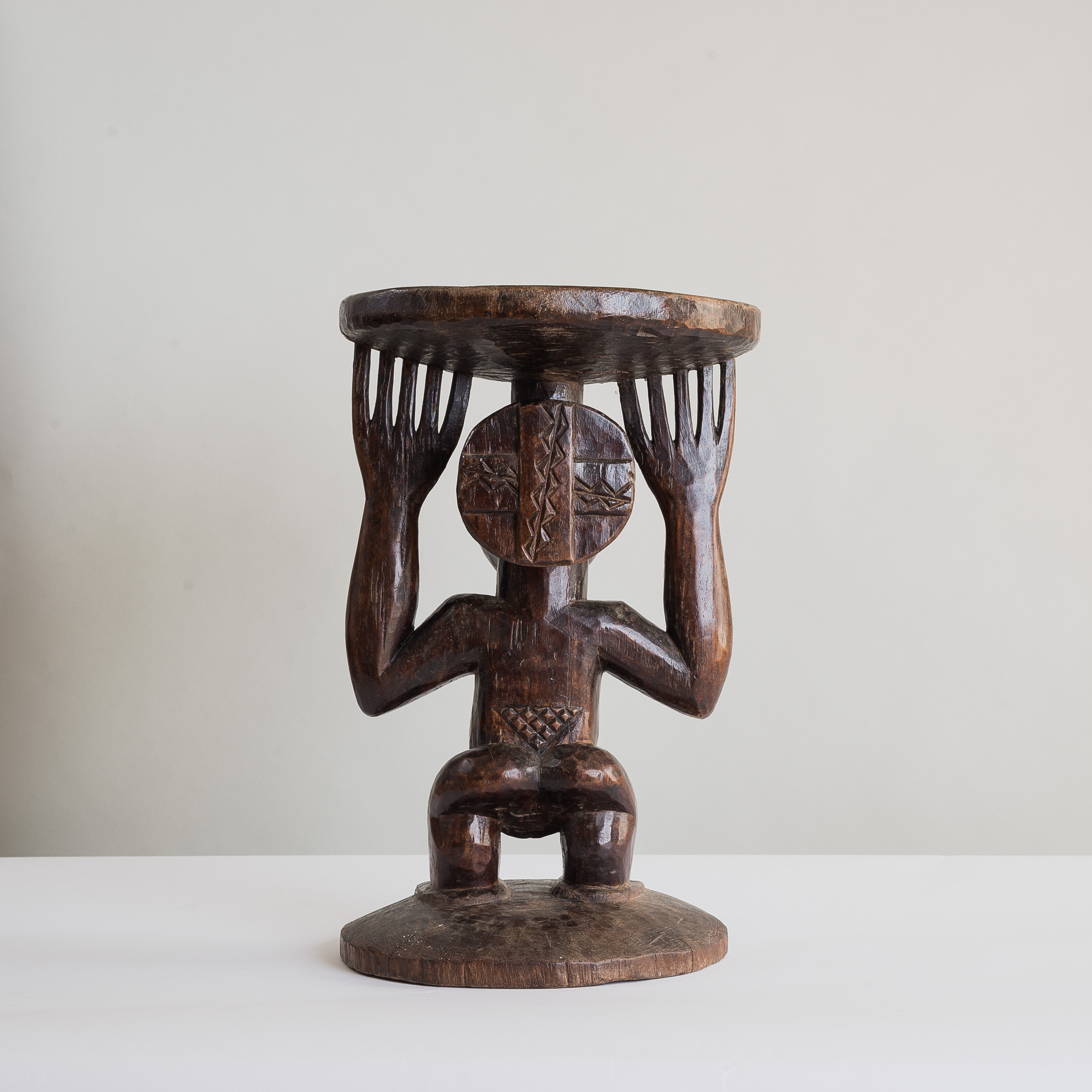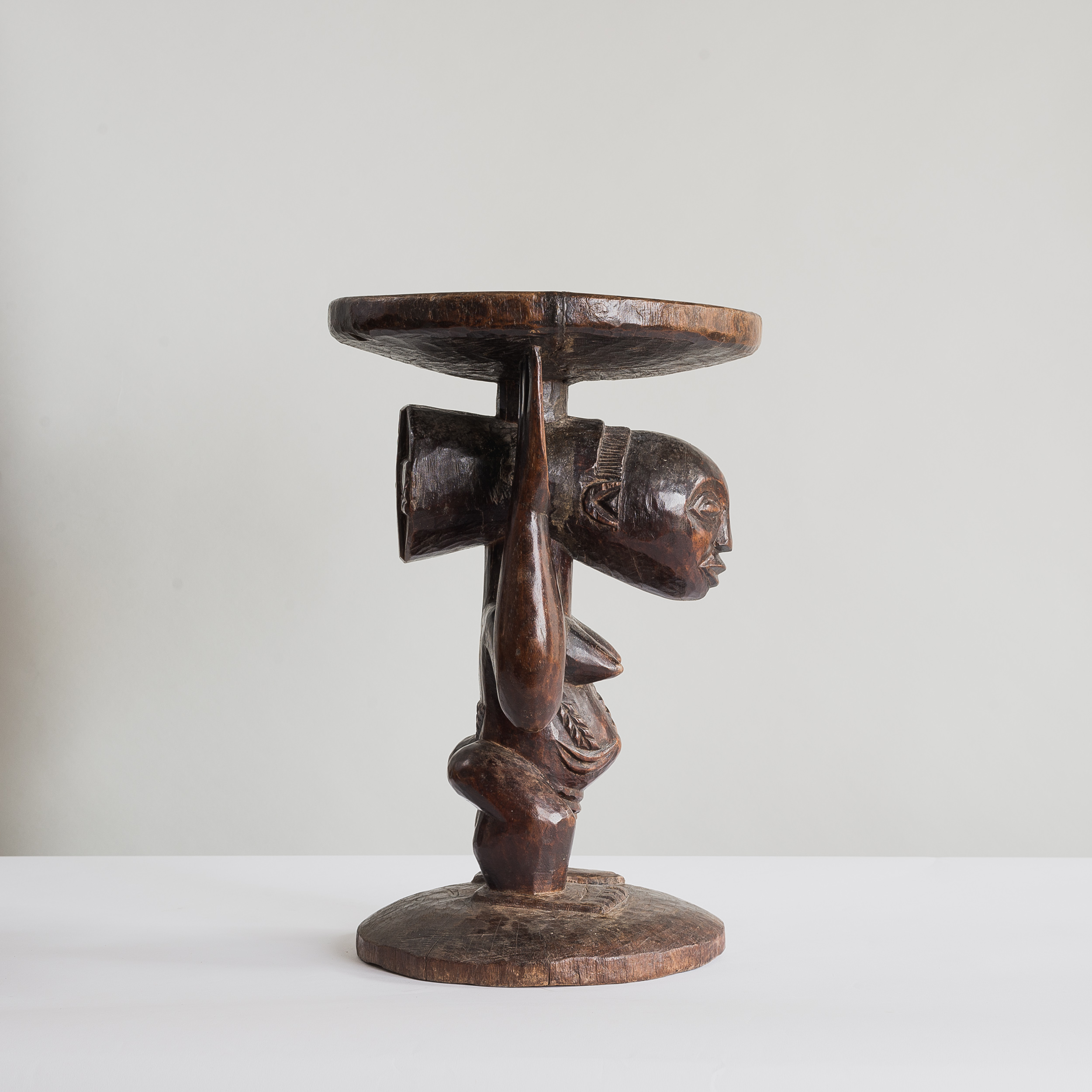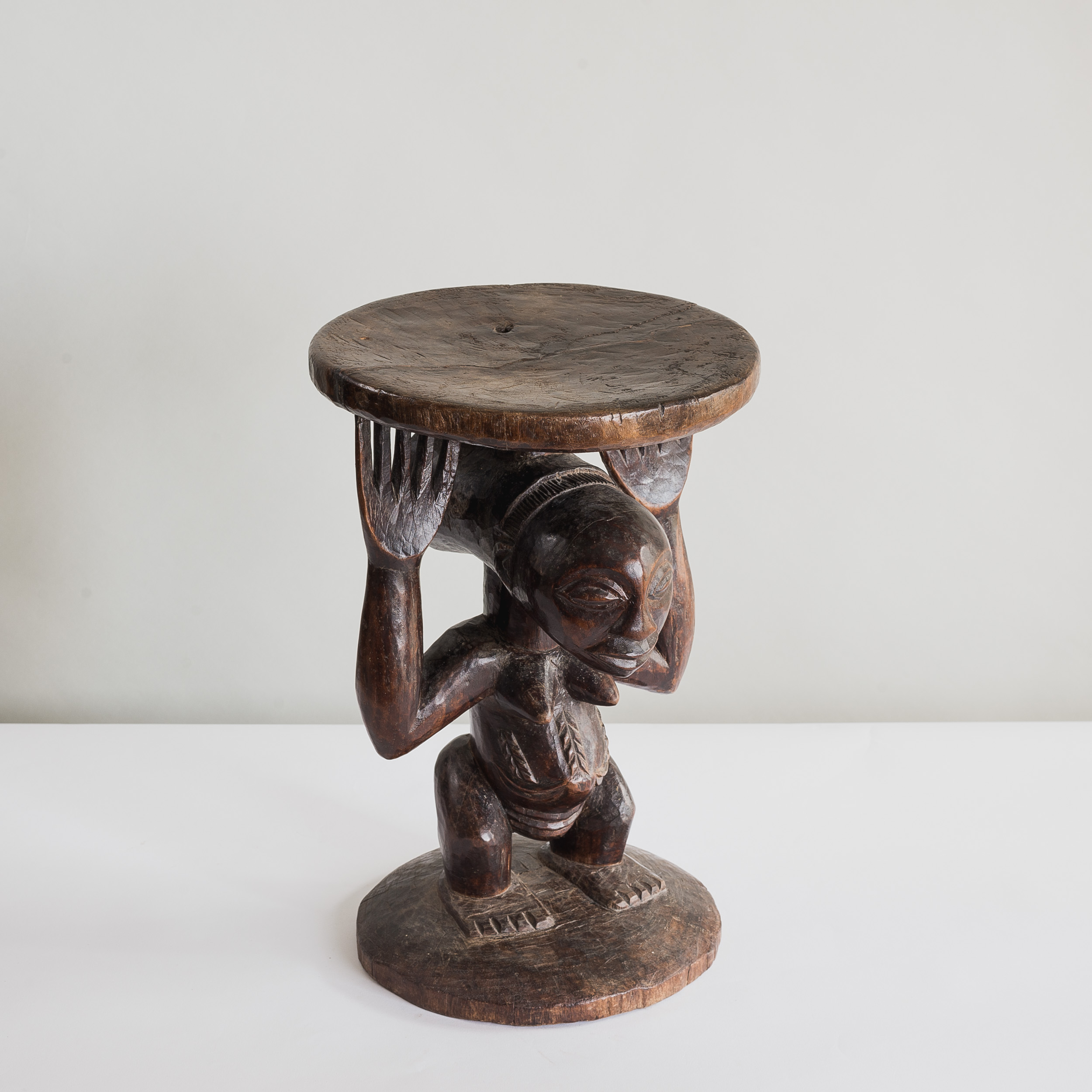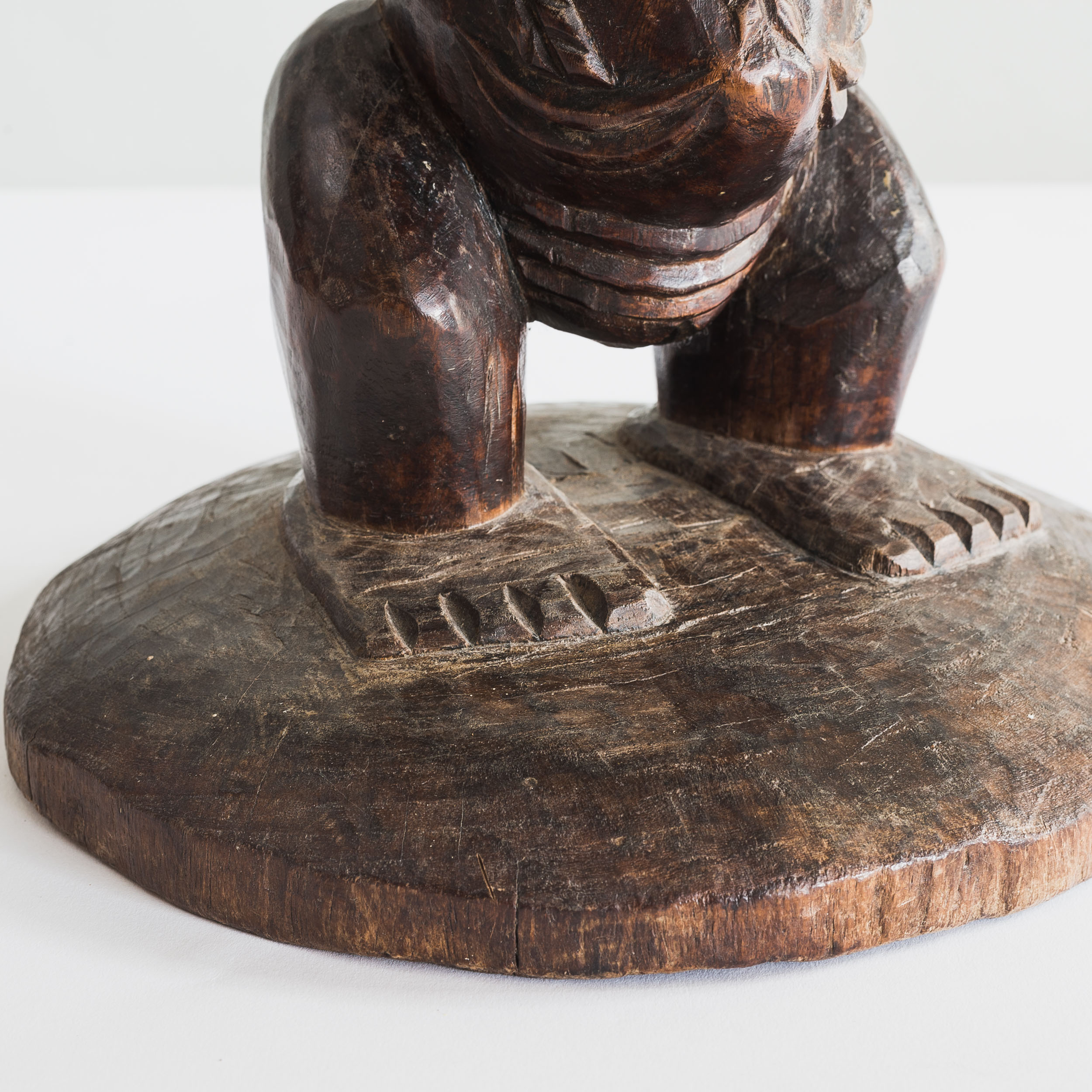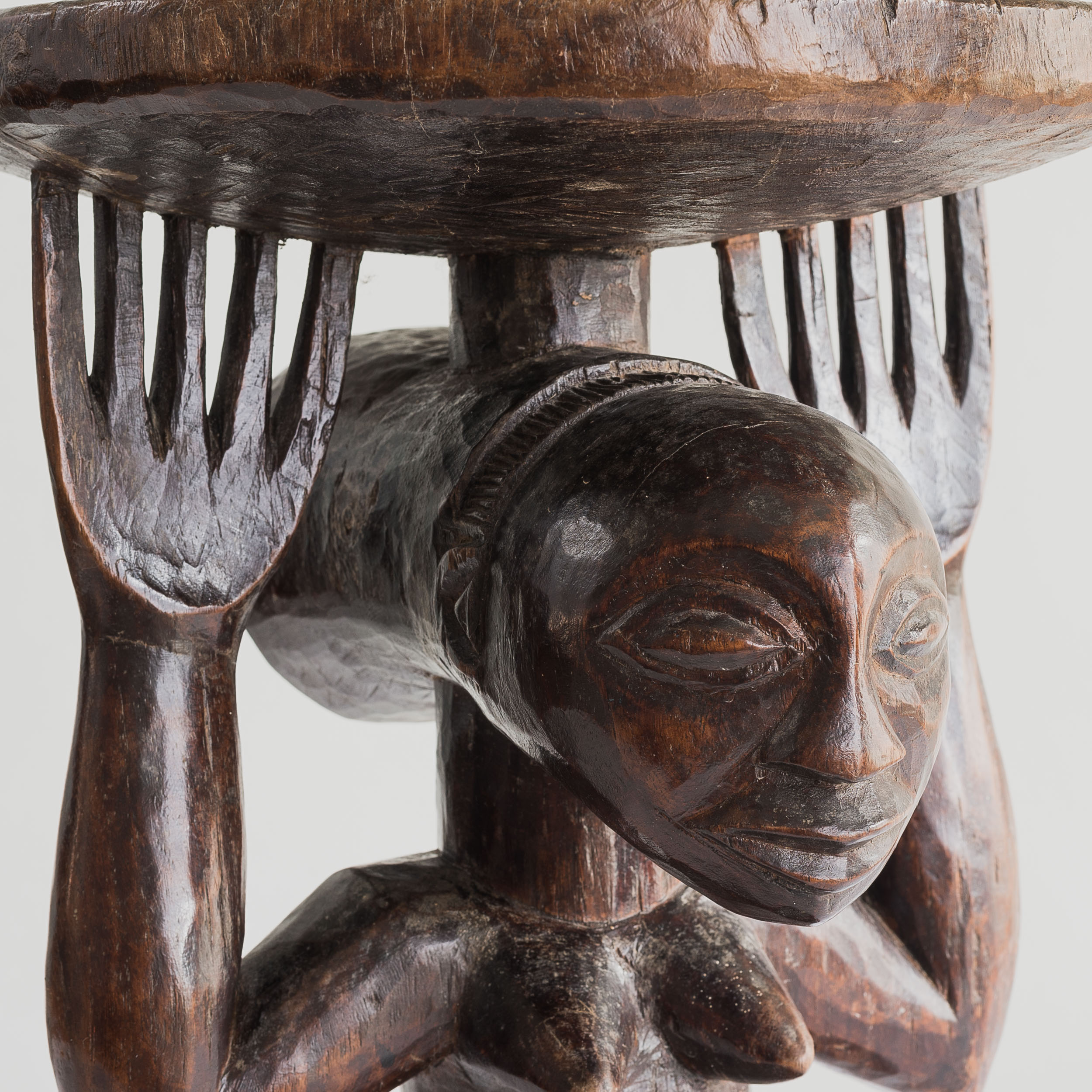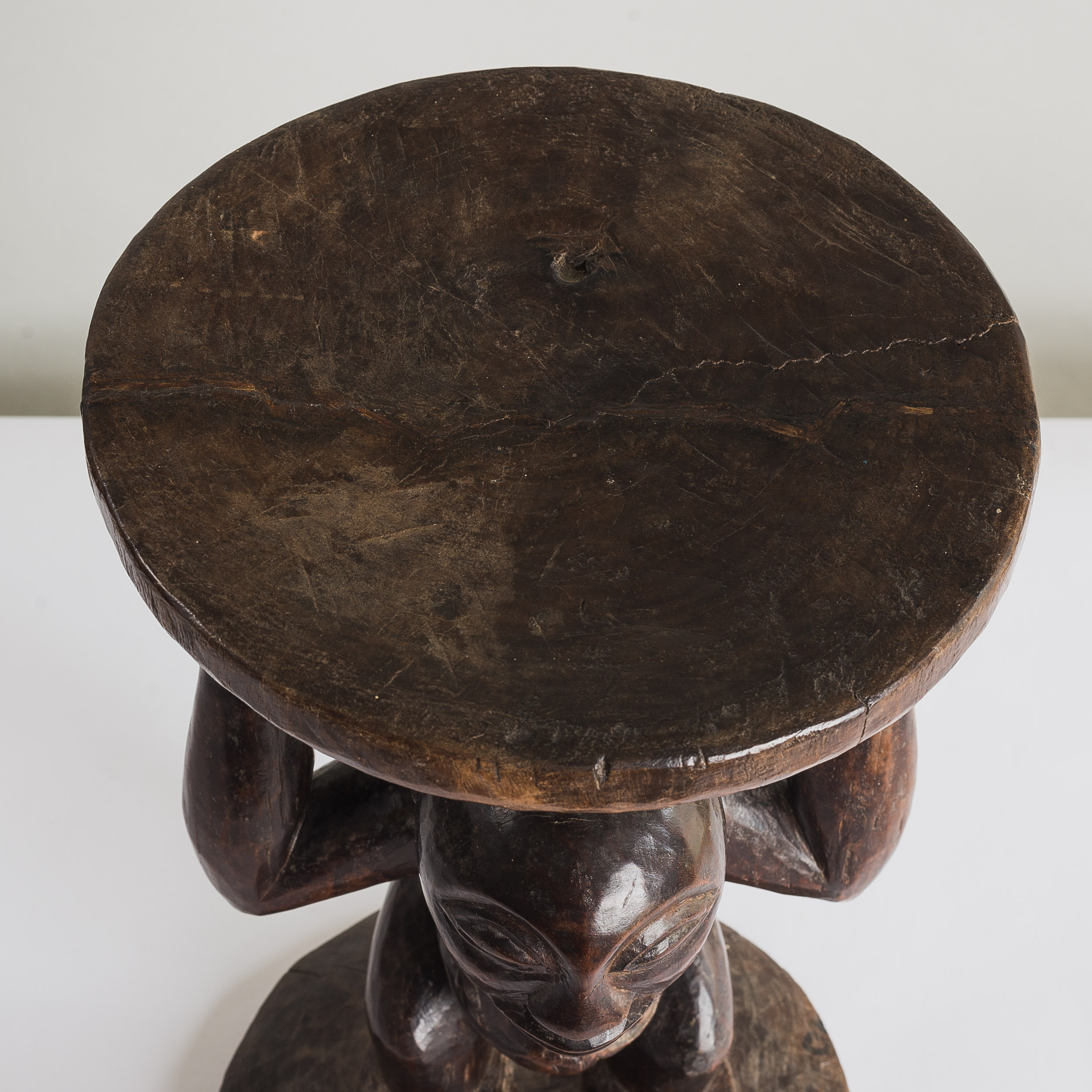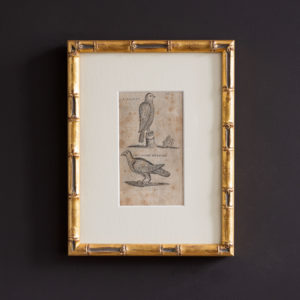Luba stool
Democratic Republic of Congo, a standing female with prominent fingers.
Luba art relates most commonly to the Kings and Chiefs of the Congolese Luba tribe, who would assert their power by display of ceremonial objects during ceremonies. Stools were considered to be the most important of these objects as they would serve not only as a seat but as a receptacle for the Chief’s spirit.
The ruler is thus figuratively and literally supported by a caryatid figure - in this case a standing female ancestor. The carvings seen on her stomach allude to the maternal - such markings were common among many matrilineal societies in Africa to emphasise and protect the navel as the threshold between oneself, one’s mother and one’s own lineage.
£375
In stock
Recently Viewed Items
-
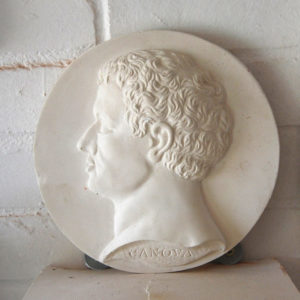
An English relief cast plaster portrait roundel of Canova
£115An English relief cast plaster portrait roundel of Canova
the sculptor depicted in profile, the roundel inscribed "CANOVA",£115 -
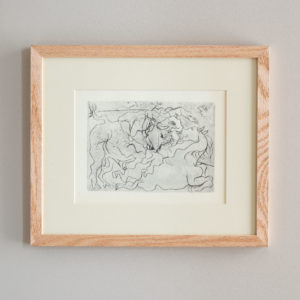
Picasso, Vollard Suite, 1956. Paris, November 8, 1933.
£175 eachPicasso, Vollard Suite, 1956. Paris, November 8, 1933.
Lithographs, published 1956 based on Picasso's work, produced from 1930-1937 for the art dealer Ambroise Vollard. Framed in plain oak with cream mounts. Paris, November 8, 1933. Bullfight II£175 each -
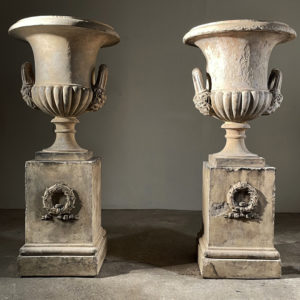
A pair of early Victorian stoneware garden urns
£10,400A pair of early Victorian stoneware garden urns
each semi-lobed campana urn with loop and mask handles and raised on a socle foot, above a square section pedestal with a relief-cast wreath to one side, bearing the maker's mark to each element,£10,400

